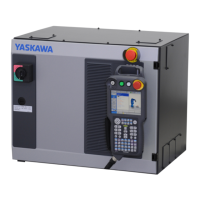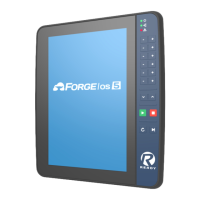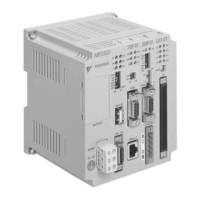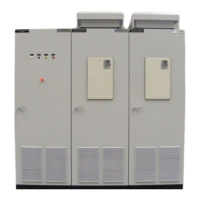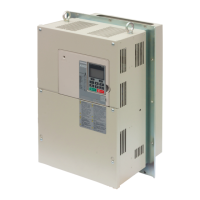4, 3. 3.1 Multi-block Writing and Operation
in MD I Mode (Cent’d)
1
Referred to as
tithe data which has, just been
entered” (32 characters maximum) .
Note: The depression of the EOB key displays
II II
:.
Fig.4.20
(2) Editing MDI data
INSRT , and ALTER keys permit editing
multi-block data written in. Address rword)
pointed to by the cursor willbe edited.
The
~CURSOR
and i
~U~S~ keys
1
move the cursor forward and backward.
a. ERASE key:
When this key has been de-
pressed, the whole word designated is
erased.
b. INSRT key: This key inserts the data
which has just been entered next to the
word the cursor points to.
c. ALTER key : This key replaces the word
which the cursor points to with the data
which has just been entered .
d. WR key: This key appends the data which
has just been entered at the end of the
program displayed.
In MD I mode, only one screen currently
displayed may be edited. Unlike EDIT mode
and MEM mode, the display and edit of
multiple screens cannot be performed ,
When the RESET key is depressed, the
stored programs are allerased.
(3) Operation in \lDI mode
a,
Depressing
the CYCLE START button in
MD I mode can automat ic~liyexecute thr
part programs stored in the MD I buffer.
When the PROG function is active, the cur-
sor is displayed at the head of the block
currently executed .
\\Thenthe execution of
allpart programs is completed, the part
programs and the CRT displays are erased
b If “M99” is written at the end of a part pro-
gram , this program is executed repeatedly.
The repetition may be stopped by depress-
ing the FEED
HOLD then RESET .
c.
While a program is being run, the PROG
function need not be active. Depressing
POS can display the current values on the
CRT.
4
NI coo U-40. ;
REPEATED
RUN
N2 CO1 W-20. FO. 3;
IN MD I MODE.
N8 M99:
4. 3.3.2 Display in Memory Run Mode
(PROGRAM [MEMI )
The part program being executed in memory run
mode (MEM mode) may be displayed by the
following operations:
(1) Select the MEM mode,
(2) Depress the PROG function key.
On the CRT screen, the cursor is position-
ed at the head of the block currently execut–
ed. The cursor moves to the next block
when its execution is started.
CURSOR
Fig. 4.21 Display of Part Program
in Memory Operation
160
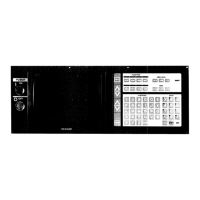
